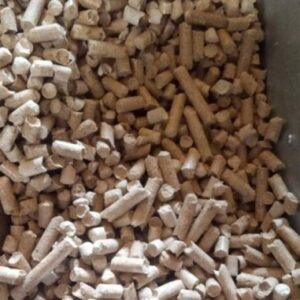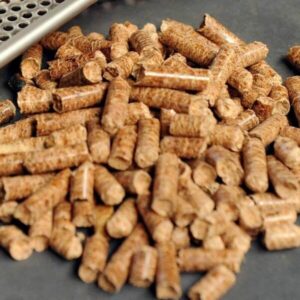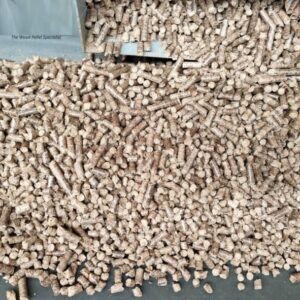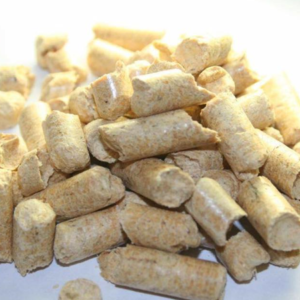Description
Description of the 6mm wood pellets: 6mm wood pellets
a convenient, economical and efficient way to heat a home or business with domestic and imported fuels. Wood pellets.
A1 quality wood fires
Diameter: 6mm-8mm
Low dust content <1% High ash melting temperature > 1200 ° C
Made from the best virgin woods
Hardwood and softwood 6mm:
hardwoods such as maple, oak, birch and ash. And we all know we install soft woods like pine, fir and spruce. Wood pellets
European firewood consumption:
Most of the consumption was for heat production, accounting for 61.8%. The consumption of pellets for heat can be divided into three markets – domestic heating (69%), commercial heating (19%) and heat produced by CHP (12%). The remaining 38.2% of wood pellets were used to generate electricity. It should be noted that technologies for energy production from pellets for heat, electricity or both are mature, offering efficient and reliable processes. Wood pellets
The benefits of 6mm wood pellets:
If you want to get a reliable heat source, save money and help protect the environment, Wood Pellets 6mm biomass makes a great choice. When the pellets are burned, they release the same amount of carbon dioxide that wood biomass absorbs during its growth, making them carbon neutral. Wood pellets
Excellent pellet quality is essential to achieve a stable and optimal heating process. As there are different fuel properties, it is essential for stove and boiler owners to select the correct quality fuel that best suits their premises. Wood pellets.
The use of pellets for the production of heat remained a strong sector in the EU. The use of pellets for the production of electricity. Wood pellets.
From heating to horse bedding: Wood Pellet A1 uses:
A small and compact product that faces some big challenges, our pellets are a true force of nature. About the height of a cork, it is an energy-rich, low-ash, low-moisture and clean-burning heating source for water heaters and wood boilers in domestic, commercial and large industrial heating applications. Wood pellets.
Our 6mm wood pellets also make a natural and comfortable choice for equine bedding. They are highly absorbent, dramatically reduce softening time, reduce bedding consumption and are easy to store and transport. Wood pellets.
Storage
of 6mm wooden pellets: For better longevity, wooden pellets should be stored in a closed place. Wet locations may require a dehumidifier. When stored properly the pellets can have a shelf life of over two years, but are ideally used within a six month period. At Europe pellets we are able to store the pellets outside due to the high recycling rate, so that no ton of pellets is outside for more than a month or two. Wood pellets.
Water will destroy the wood pellets. Pellet wood sacks are not waterproof. Each bag contains small holes to allow the tablets to breathe. Take special care to prevent water absorption. Wood pellets.
A1 Wood Pellets from the pallet will be covered with a UV resistant bag / hood which will be effective for up to 12 months. Do not remove the bag/hood until the pellets are used.
Acceptance of acceptance and storage of raw materials:
The product is performed in the plant area.
The raw material reception area is made of concrete slabs.
Railway feeder comes to the site which can be used to deliver raw materials. Truck access routes are also available.
The raw material storage area consists of a storage area and an area of raw materials that directly supply processing.
Transport unloading is carried out by a wooden loader at the base of the LIEBHERR A 924 В excavator.
Unloading takes place in storage areas or directly in the working area of the wood feed for processing.
Timber quality and quantity acceptance are carried out on site along with x-ray inspection. Wood pellets
Pellet fuels (or pellets) are biofuels made from compressed organic matter or biomass. Pellets can be made from any of five general categories of biomass: industrial waste and by-products, food waste, agricultural residues, energy crops and virgin wood. Wood pellets are the most common type of pellet fuel and are generally made from compressed sawdust [3] and related industrial waste from lumber milling, wood product and furniture manufacturing, and construction. Other sources of industrial waste include empty fruit bunches, palm kernel shells, coconut shells and tree tops and branches discarded during logging operations. The so-called “black pellets” are made from biomass, refined to resemble hard coal and developed for use in existing coal-fired power plants.
The pellets are classified based on their heating value, moisture and ash content and dimensions. They can be used as fuel for electricity generation, commercial or domestic heating and cooking. Pellets are extremely dense and can be produced with a low moisture content (below 10%) which allows them to burn with very high combustion efficiency. They can be used as fuel for electricity generation, commercial or domestic heating and cooking. Pellets are extremely dense and can be produced with a low moisture content (below 10%) which allows them to burn with very high combustion efficiency. They can be used as fuel for electricity generation, commercial or domestic heating and cooking. Pellets are extremely dense and can be produced with a low moisture content (below 10%) which allows them to burn with very high combustion efficiency.
All European heating equipment is supplied with technical data sheets showing biofuel parameters to achieve the highest possible performance and efficient operation. There are often cases when the cause of failure of pellet boilers was the supplier of poor quality pellet fuel. This is why consumers pay special attention to the quality of wood pellets. The company applies environmentally friendly raw materials for the production of pellets, supplied under contracts with the State Forestry of Ukraine. This gives us the opportunity not only to guarantee the stability of quality indicators, but also to provide guarantees for the stability of delivered product volumes. This type of cooperation predetermines the unconditional fulfillment of our obligations towards the counterparties. Wood pellets
Each released batch of our wood pellets corresponds to specially developed and approved technical conditions that make our pellets competitive both in the domestic and foreign markets. The ash content of our pellets is within 1% which allows one to use them for heating private homes. Wood pellets
6mm diameter;
Ash content up to 1%.
Humidity up to 9%.
Bulk density 630 kg / m3;
Friction – up to 3%
Calorie content: 4600 kcal / kg.
Production techniques:
The raw material enters the crusher, which is reduced to the state of flour. The resulting mass is fed to the dryer from it – to a pellet press in which pellets of wood flour are pressed. Compression during compression increases the temperature of the material, lignin, contained in wood particles softens and sticks into a tight cylinder. To produce one ton of pellets, approximately 2.3 -2.6 cubic meters of waste wood is needed, while 0.6 cubic meters of sawdust is burned per ton of production. Wood pellets
The finished pellets are cooled, packaged in different packages – from small 15 kg packages to large bags (large industrial packaging) weighing 1.1 tons – or delivered to the consumer in bulk. Wood pellets
A pellet stove is a stove that burns compressed wood or biomass pellets to create a heat source for residential and sometimes industrial spaces. By feeding steady fuel from a storage container (hopper) into a pot area, it produces a steady flame that requires little to no physical adjustments.
The efficiency of a pellet stove can be up to 90% or more. … This is more than a classic wood-burning stove, with an efficiency of only 40 to 50% (60 to 80% for recent high-efficiency stoves), and much more than an open fire, with an efficiency of 5 to 15 %. Wood pellets
Pellet stoves can only burn wood pellets (as Jodi mentioned) or biofuels like dry corn (depending on the actual model). It would be unwise to try to burn logs or sticks inside a pellet stove because of how the pellet stove works. Wood pellets






Reviews
There are no reviews yet.